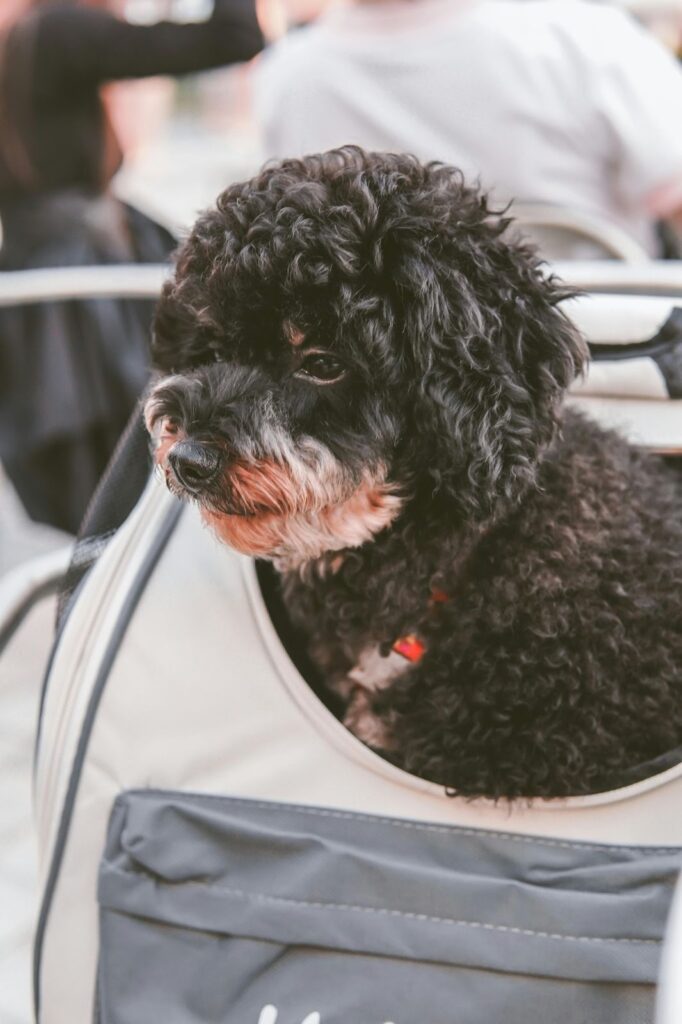Air travel with pets has surged as owners embrace their furry companions on journeys. Yet, the success of such adventures often hinges on the carrier you select. A proper pet carrier transcends mere airline compliance—it cradles your pet’s safety, comfort, and peace throughout the trip. From sizing to material and additional features, every detail holds weight in the quest for the perfect pet carrier.
Let’s explore the essential factors that will guide your decision.
1. Navigate Airline Rules with Precision
Airlines dictate specific guidelines for pet carriers, and these requirements differ based on the airline and destination. Scrutinise your chosen airline’s policies before making a purchase. Key elements to assess include:
- Dimensions: Airlines often cap cabin carrier sizes to ensure they fit snugly under seats.
- Material and Ventilation: Carriers must be built from resilient materials and allow airflow through multiple sides.
- Secure Closures: Zippers or locks must resist accidental openings.
- Weight Limits: Some airlines consider the combined weight of your pet and the carrier.
Pro Tip: Revisit regulations before each flight. Policies shift unexpectedly, and assumptions can lead to surprises.
2. Measure Your Pet with Precision
Accurate measurements anchor your pet’s comfort and security during air travel. A poorly sized carrier leads to unease, stress, or rejection at check-in. To measure effectively:
- Length: Gauge from the nose’s tip to the tail’s base, then add extra space for movement.
- Height: Measure from the floor to the head’s top (or ears if upright).
- Width: Estimate the breadth needed for your pet to pivot comfortably inside.
Your carrier should let your pet stand, pivot, and recline naturally without being overly spacious, which can cause shifts during transit or non-compliance with regulations.
Pro Tip: Consult your vet for advice tailored to your pet’s breed, size, and temperament.
3. Pick Between Soft-Sided and Hard-Sided Options
Pet carriers divide into soft-sided and hard-sided categories. Each suits different needs:
- Soft-Sided Carriers:
- Ideal for cabin travel due to their pliable nature.
- Lightweight and easy to handle.
- Often include multiple entry points and collapsible frames.
- Best for smaller pets, such as cats and toy breeds.
- Consideration: Soft carriers may falter with larger pets or those prone to chewing or clawing.
- Hard-Sided Carriers:
- Sturdier and more protective during turbulence or handling.
- Easier to clean, especially for pets with accidents.
- Suited for larger pets or checked luggage.
- Consideration: Hard carriers lack flexibility and may prove cumbersome.
Your choice should align with your pet’s behaviour, size, and whether they’ll travel in the cabin or cargo.
4. Maximise Ventilation and Visibility
Breathability is crucial for keeping your pet at ease. Look for carriers featuring:
- Mesh Panels: Ventilation on multiple sides.
- Visibility: Openings allowing your pet to see you or their surroundings.
- Durable Mesh: Reinforced to withstand chewing.
For pets that prefer solitude, carriers with retractable panels offer a snug, cocoon-like refuge.
5. Prioritise Comfort
Travel stresses pets unfamiliar with confinement. A thoughtfully designed interior can transform their experience. Seek carriers with:
- Padded Bases: Soft, removable liners such as washable fleece.
- Ample Room: Enough space for your pet to recline and stretch slightly.
- Reinforced Frames: Prevent sagging and maintain stability.
Pro Tip: Include a blanket or toy imbued with your pet’s scent to foster a sense of familiarity.
6. Streamline Handling
Effortless handling enhances both the journey and your pet’s comfort. Look for:
- Handles and Straps: Padded shoulder straps and sturdy grips.
- Lightweight Construction: Durability without excess heft.
- Multiple Entry Points: Simplifies security checks and loading.
Carry the empty carrier for extended periods to test its portability before travel.
7. Examine Safety Features
A safe carrier shields your pet from mishaps. Prioritise:
- Secure Closures: Ensure zippers or clips stay locked.
- Sturdy Frames: Resist bumps and sudden movements.
- Escape-Proof Design: Eliminate gaps that might allow an escape.
- ID Tags: Attach labels with your contact details.
Some carriers include interior leash clips to prevent pets from leaping out.
8. Choose Easy-to-Clean Options
Mess-free travel is a must. Seek carriers with:
- Removable Liners: Washable and replaceable.
- Waterproof Interiors: Simplifies cleaning spills.
- Machine Washability: Saves time for soft-sided options.
Pro Tip: Bring extra liners to swap out during long trips.
9. Introduce the Carrier Early
Help your pet acclimate to the carrier before travel day:
- Practice Sessions: Allow your pet to explore the carrier at home, gradually extending the duration.
- Positive Reinforcement: Reward your pet with treats or toys for entering the carrier.
- Fit Test: Ensure the carrier feels secure without undue stress.
Early exposure reduces anxiety and preempts last-minute struggles.
10. Seek Bonus Features
Additional features enhance convenience:
- Storage Pockets: Hold essentials like treats, leashes, or documents.
- Expandable Panels: Provide extra space when stationary.
- Built-in Bowls: Handy for feeding during layovers.
- Seatbelt Loops: Keep your carrier secure during car rides.
11. Tailor to Your Pet’s Personality
Your pet’s temperament guides the final choice:
- Are they anxious? Opt for carriers with wide visibility or adjustable ventilation.
- Do they chew? Hard-sided carriers offer better resistance.
- Prone to overheating? Choose carriers with ample airflow.
- Have mobility issues? Look for top-loading designs for gentle handling.
12. Balance Cost and Quality
Investing in a durable carrier ensures safety and longevity. Prioritise:
- High-Quality Materials: Resist wear and tear.
- Reputable Brands: Trusted by other pet owners.
- Warranty: Offers peace of mind.
A reliable carrier often outlasts cheaper alternatives, saving future costs and frustration.
13. Final Preparations for Travel Day
Before departure:
- Pack Essentials: Include water, collapsible bowls, waste bags, and snacks.
- Confirm Airline Rules: Double-check size and documentation requirements.
- Label the Carrier: Add clear identification tags.
- Prepare for Security Checks: Use a leash while the carrier passes through scanners.
Conclusion: Crafting a Seamless Journey
Selecting the right pet carrier demands thoughtfulness and care. A well-chosen carrier shields your pet, fosters comfort, and simplifies the trip. Treat it as a sanctuary—one that provides reassurance in unfamiliar skies. With the right carrier, every journey can become a shared adventure.

